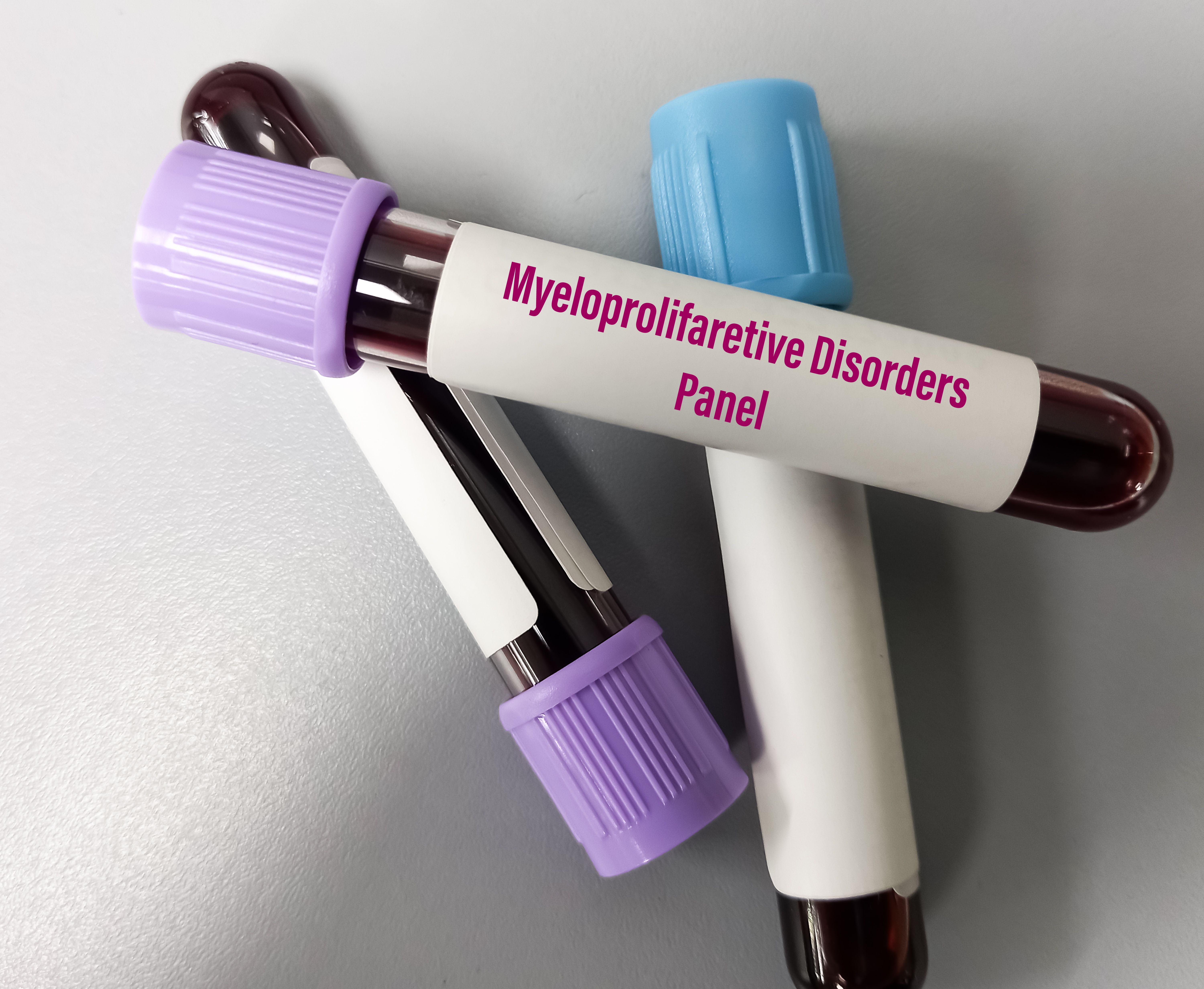EXCEED-ET Investigates an Alternative Option for Disease Modification in Essential Thrombocytopenia
In an interview with Targeted Oncology, Lucia Masarova, MD, discussed the ongoing EXCEED-ET clinical trial and its potential to provide a new option to alter disease and ward off post-essential thrombocytopenia myelofibrosis in adult patients.
Lucia Masarova, MD, PhD

An overperforming JAK-STAT pathway, including the presence of JAK2, CALR, and MPL gene mutations leads to high platelet count in patients with essential thrombocytopenia (ET).1 Safe and potent therapies are needed for these populations, especially for those requiring cytoreduction, regardless of their prior exposure to hydroxyurea and/or anagrelide, according to Lucia Masarova, MD, et al.
There is also an unmet need for treatments that can reduce the risk of thrombohemorrhagic events, ultimately stopping or preventing the development of post-ET myelofibrosis.1
Ropeginterferon alfa-2b-njf (Besremi) is a next-generation interferon alfa agent. It is FDA-approved to treat another myeloproliferative neoplasm (MPN), polycythemia vera (PV). In ET, ropeginterferon alfa-2b-njf is being investigated for the treatment of adult patients in a single-arm, multicenter trial (EXCEED-ET; NCT05482971).
At the American Society of Clinical Oncology (ASCO) 2023 Annual Meeting, Masarova, assistant professor, Department of Leukemia, Division of Cancer Medicine, The University of Texas MD Anderson Cancer Center, presented the EXCEED-ET study design, noting its potential to fill an unmet need for new therapies to treat adults with ET.
“Eventually, we can hopefully add it to something and maybe keep on some agents that have been around to help control the counts. At the same time, maybe we can do a low-dose interferon for a longer time as a disease modification agent, and hopefully you will wake up in an era where there's going to be no ET or PV,” Masarova told Targeted OncologyTM, in an interview.
In the interview, Masarova, discussed EXCEED-ET in detail and provided insights into the treatment options for ET and PV.
Targeted Oncology: In terms of disease modification, what is the current state of treatment in MPNs?
Masarova: We hope there will be a goal of therapy in the coming decades. Currently, the therapy goals are kind of focused more in controlling the accounts displaying the symptoms and getting deeper responses. Right now, with some therapies that showed us that we could decrease the allele burden, or we could alter the bone marrow fibrosis, or the bone marrow morphology is going to be the disease modification. As of now, there is no agent that would do it, except for the interferon, which showed quite promisingly that we can bring it into the landscape of the disease.
What does the treatment landscape currently look like for ET?
ET is considered a benign disease. People live with it for a very long time. Currently, treatment is for only those we call high-risk disease patients. Patients that had thrombosis in the past, and then patients that are over the age of 60 years and have a dAkt mutation, and that's according to the revised International Prognostic Score of Thrombosis for Essential Thrombocytopenia score. Those patients are treated to decrease the risk of thrombosis, but not to do anything else. This is modified just to simply increase the thrombosis risk. That is hydroxyurea, it’s a standard frontline agent, which is an easy to take oral drug. However, it could lead to some resistance or about 30% patients can become.
Because ET also affects younger people, plenty of younger females, they don't really want to take chemotherapy forever, which I don't blame them for. They are interested in taking something else. The standard interferon, recombinant or pegylated, which is called the peginterferon alfa-2a [Pegasys]. We've recently used this for the couple years has been around for MPNs, particularly for ET and the PV. That is about 40 years almost. This treatment has a lot of data, and a lot of implications. This may be a disease modifying agent, which is an agent that could decrease the allele burden, eradicate the malignant clone, and ultimately change the disease behavior. We were excited. We had novel interferon called ropeginterferon-alpha-2b-njft approved in patients with progressive disease back in 2021. That has been preceded by approval in European Union in 2019. That's an excellent option in terms of interferons. The normal alternative with the ropeginterferon, which is the novel mono-pegylated form, is kind of more convenient because it's used every other week. Once we reached complete hematologic control, it's used once a month. That's a significant improvement in inconvenience for patients and in tolerability as well as compliance issues. We were excited to get it in PV, and we have it in some studies in PV to expand the access and maybe try a different schedule, and you move it to ET patients. That's something that we're going to be looking at.
Then, for patients with PV refractory to hydroxyurea, we have approved ruxolitinib, which is the JAK inhibitor that has solid data in the field after hydroxyurea based on results from the RESPONSE [NCT01243944] and RESPONSE-2 [NCT02038036] trials. It will be 10 years since we had refractory patients treated with ruxolitinib. It's an excellent drug for controlling the symptoms and spleen count.
Last year, we had a very excited study called MAGIC-PV [ISRCTN61925716], which was reported by our European colleagues that showed the advantage of ruxolitinib for decreasing the rate of thrombosis hemorrhage. It also actual improved event-free survival, death, and adverse events in terms of progression to myelofibrosis. So, it was exciting. If we consider disease modification is what’s going to be preventing the disease to go into myelofibrosis, I think that will be exciting to see how far we can get in that field.
Image Credit: © MdBabul - www.stock.adobe.com

Can you discuss the rationale of the EXCEED-ET study [NCT05482971]?
The EXCEED-ET study is getting the ropeginterferon, which is the novel interferon into the space of ET. It is phase 1/2 study that gets the ropeginterferon in patients in North America. The patients are hydroxyurea-refractory or hydroxyurea-naive. Patients that have ET platelets over 450,000 need the therapy with some symptoms, and do not have a contraindication for interferons, which also had to be mentioned that the drugs could not be used in patients that have previous autoimmune disease, psychiatric diseases, or neurological because it could aggravate their symptoms. But those patients, if they would be eligible, they could be getting the full access to the drug. Also, with patients with ET, the escalation is going to be a lot faster to 250 micrograms, every other week, 350, and then 500 is the maximum dose that has been explored. However, I have to say the approval of ropeginterferon for PV had even higher dose, and the maximum-tolerated dose was not reached. This is a perfectly safe dose that we have patients on. We're going to see how it's going to do in ET patients. There is a core treatment period, which continues after the 4 weeks of escalation of up to 56 weeks. The patients will be dosed every other week with a tolerable dose. We will be monitoring the primary end points of durability of control, hematologic control, platelets less than 450, white cells less than 10. That will basically sustain 80% of 36 consecutive weeks. Then, the key secondary end points are going to include all important end points in ET patients, such as complete hematologic response, composite hematologic response, that includes control of spleen, control of symptoms, absence of disease progression, and absence of thromboembolic events. Then, it's going to also have this excited end point, which is basically a decline or allele burden. We’ll be checking the allo burden, what we call the molecular response, and then bone marrow morphology response.
Also, there are a couple other exploratory or pharmacokinetic studies that we're going to be conducting. It's a study that does not allow patients that were exposed to interferon. For example, patients and [peginterferon alfa-2a] would not be eligible. However, with a plan amendment, there is going to be measurement of neutralizing antibodies against ropeginterferon. If patients are not detected to carry those, they will be still eligible.
If positive, how do you see this study impacting the field?
I'm excited about it. I've used interferons in the off-label setting ever since I came to MD Anderson, and it's been proven to be an effective therapy for young people. I have a lot of patients come in from everywhere and they don't want to do chemotherapy, they seek the agent. So far, we've been only able to give them the [peginterferon alfa-2a], where we have to deal with insurance companies, because it was off-label setting.
Last year, we published 15 years follow-up on our phase 2 study. But this is going to open the use of the agent, I'm excited about the less frequent interactions, which my patients are excited about as well. I'm going to be really comparing and lucky for me, I've seen the tolerance of the [peginterferon alfa-2a] in these patients. I will really be comparing them to the ropeginterferon, seeing what this agent could offer, and seeing the results in PV. I’m quite excited about it. I don't think we will have any data about what we call the disease modification or how we call it in the next 10 years, maybe because it's a very low progressing disease, but I'm looking forward to seeing whether we're going to see elimination or absence of disease progression to myelofibrosis. I also wonder if we will see minimization of the thromboembolic events. That will be the ultimate disease modification change.
Afterwards, hopefully we can add it to something and maybe keep patients on some agents that have been around and help control the counts. At the same time, maybe we can do a low dose interferon for a longer time as a disease modification agent, and hopefully you will wake up in an era where there's going to be no ET or PV.
REFERENCE:
Masarova L, Mascarenhas J, Qin A, et al. EXCEED-ET: A single-arm multicenter study to assess the efficacy, safety, and tolerability of ropeginterferon alfa-2b-njft (P1101) in North American adults with essential thrombocythemia. J Clin Oncol. 2023;41(suppl 16): TPS7088- TPS7088. doi:10.1200/JCO.2023.41.16_suppl.TPS7088
Survivorship Care Promotes Evidence-Based Approaches for Quality of Life and Beyond
March 21st 2025Frank J. Penedo, PhD, explains the challenges of survivorship care for patients with cancer and how he implements programs to support patients’ emotional, physical, and practical needs.
Read More